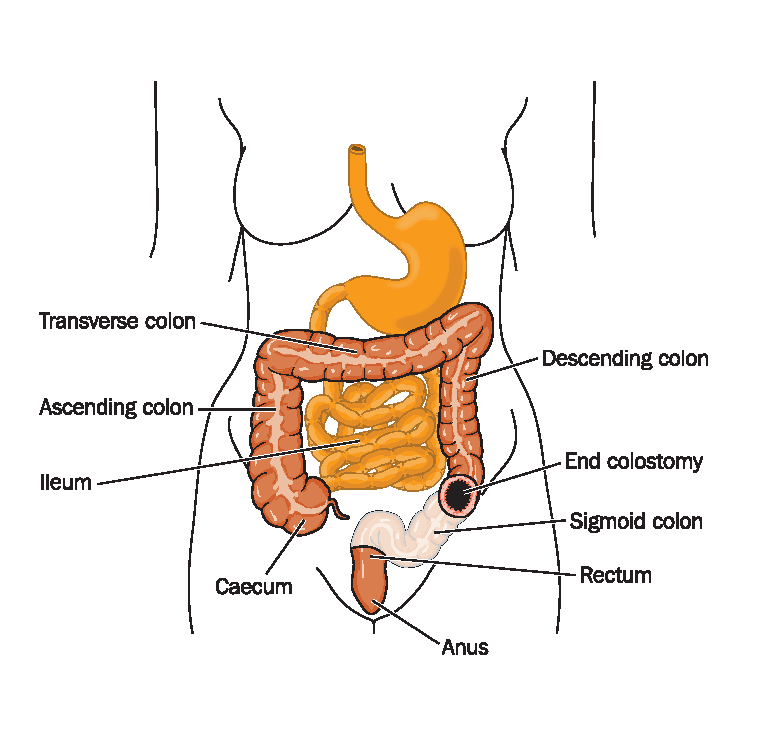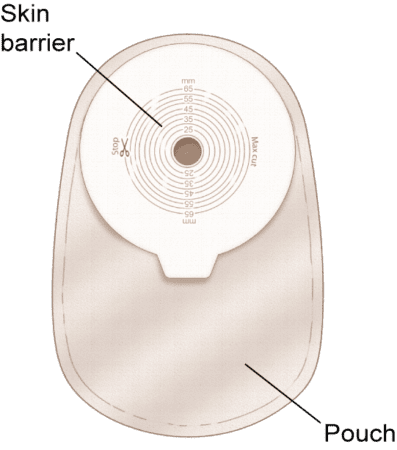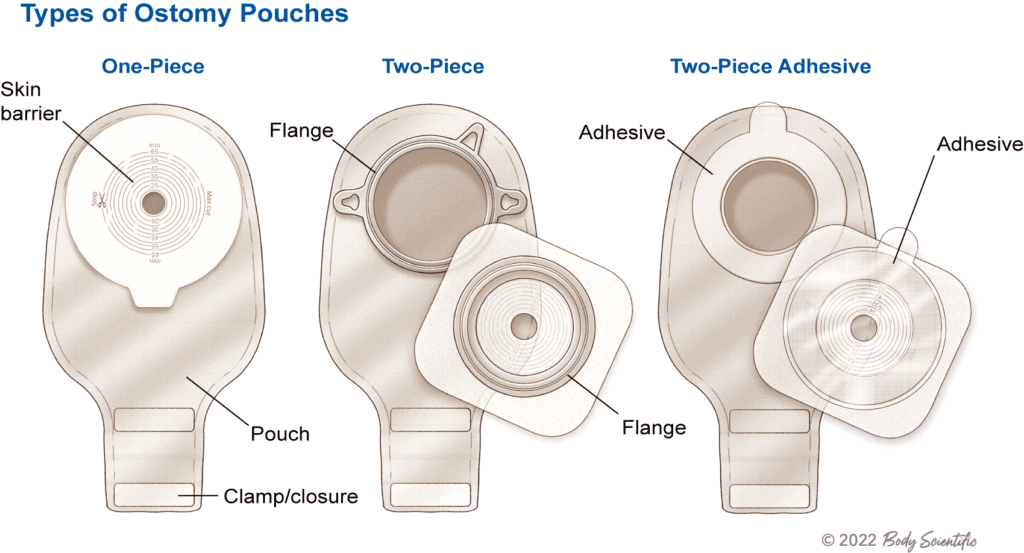 https://www.ostomy.org/wp-content/uploads/2020/08/diverticulitis-scaled.jpg
1707
2560
Contributor
/wp-content/uploads/2017/02/UOAAlogofinal2.png
Contributor2020-08-10 10:45:542020-08-10 10:45:54Diverting Diverticulitis
https://www.ostomy.org/wp-content/uploads/2020/08/diverticulitis-scaled.jpg
1707
2560
Contributor
/wp-content/uploads/2017/02/UOAAlogofinal2.png
Contributor2020-08-10 10:45:542020-08-10 10:45:54Diverting DiverticulitisColostomy: A surgically created opening in the abdomen in which a piece of the colon (large intestine) is brought outside the abdominal wall to create a stoma through which digested food passes into an external pouching system. A colostomy is created when a portion of the colon or rectum is removed due to a disease process or damaged area of the colon.
Temporary colostomy: May be required to give a portion of the bowel a chance to rest and heal. When healing has occurred, the colostomy can be reversed and normal bowel function restored.
Permanent colostomy: May be required when a disease affects the end part of the colon or rectum.
Reasons for surgery: Cancer, diverticulitis, imperforate anus, Hirschsprung’s disease, trauma, other.

Care of Colostomy

Colostomy Pouch One-Piece Closed-End
A pouching system is usually worn. Pouches are odor free and different manufacturers have disposable or reusable varieties to fit one’s lifestyle. Ostomy supplies are available at medical supply stores and through the mail and are covered by most health insurance plans.
Irrigation: Certain people are candidates for learning irrigation techniques that will allow for increased control over the timing of bowel movements. Talk to your doctor to see if you may be a candidate for this practice. To learn more about this procedure you can also read our Colostomy Irrigation Article, which is also found on pages 39-41 in the 2024 New Ostomy Patient Guide.

Living with a Colostomy:
Work: With the possible exception of jobs requiring very heavy lifting, a colostomy should not interfere with work. People with colostomies are successful business people, teachers, carpenters, welders, etc.
Sex and social life: Physically, the creation of a colostomy usually does not affect sexual function. If there is a problem, it is almost always related to the removal of the rectum. The colostomy itself should not interfere with normal sexual activity or pregnancy. It should not prevent one from dating and continuing relationships and friendships. UOAA Affiliated Support Groups are available for individuals and partners seeking emotional support.
Clothing: Depending on stoma location usually one is able to wear similar clothing as before surgery including swimwear.
Sports and activities: With a securely attached pouch one can swim and participate in practically all types of sports. Caution is advised in heavy body contact sports and a guard or belt can be worn for protection. Travel is not restricted in any way. Bathing and showering may be done with or without the pouch in place.
Diet: For guidance, follow your nurse or doctor’s orders at each stage of your post-op adjustment. Individual sensitivity to certain foods varies greatly but many are able to eat as they did before surgery. You must determine, by trial, what is best for you. A good practice for all is to chew thoroughly and hydrate properly.
Resources available:
Physicians and medical professionals are the first sources of help. Specially trained clinicians called Wound, Ostomy and Continence Nurses (WOCN) or Ostomy Management Specialists (OMS) are available for consultation in most major medical centers.
Read Our Latest Posts About Colostomies:
 https://www.ostomy.org/wp-content/uploads/2020/08/diverticulitis-scaled.jpg
1707
2560
Contributor
/wp-content/uploads/2017/02/UOAAlogofinal2.png
Contributor2020-08-10 10:45:542020-08-10 10:45:54Diverting Diverticulitis
https://www.ostomy.org/wp-content/uploads/2020/08/diverticulitis-scaled.jpg
1707
2560
Contributor
/wp-content/uploads/2017/02/UOAAlogofinal2.png
Contributor2020-08-10 10:45:542020-08-10 10:45:54Diverting Diverticulitis https://www.ostomy.org/wp-content/uploads/2020/07/elaine-summer-vlog.png
720
1280
Contributor
/wp-content/uploads/2017/02/UOAAlogofinal2.png
Contributor2020-07-23 11:10:452020-07-23 11:22:00Vlog: Prolong Summer Pouch Wear Time
https://www.ostomy.org/wp-content/uploads/2020/07/elaine-summer-vlog.png
720
1280
Contributor
/wp-content/uploads/2017/02/UOAAlogofinal2.png
Contributor2020-07-23 11:10:452020-07-23 11:22:00Vlog: Prolong Summer Pouch Wear Time
Get Moving for Ostomy Awareness
Colostomy, Events, Exercise/Sports, Ileostomy, Ostomy 5k, Ostomy Awareness, Ostomy News, UrostomyContact Us

United Ostomy Associations of America
P.O. Box 2293
Biddeford, ME 04005-2293
Call us toll-free at: 1-800-826-0826.
Our Information Line hours are Monday-Friday, 9am to 3pm EST. If you have an emergency, please dial 911 or contact your local medical professional.
Please understand that UOAA is a private, nonprofit, advocacy and informational organization. We are not a medical facility and we do not have medical or legal professionals on staff. Therefore, UOAA does not provide Medical, Mental Health, Insurance or Legal Advice. Visit UOAA Virtual Ostomy Clinic provided by The Wound Company for non-emergency, virtual ostomy support.
Get Involved
UOAA is the leading organization proactively advocating on behalf of the ostomy community. Recognizing that we are always stronger together, we encourage everyone to get involved by joining our Advocacy Network. We’ve also created several Advocacy Tools and Resources to help you successfully advocate on behalf of the ostomy community to ensure every ostomate receives quality care.

